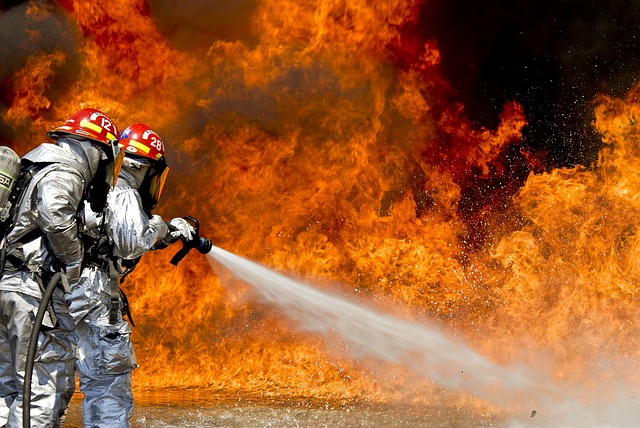Since 1966, the fire suppressant AFFF has been used by firefighters to extinguish Class B fires, which stem from combustible and flammable liquids and gases such as gasoline, alcohol, jet fuel, lacquers, and petroleum.
However, this firefighting foam poses a major risk to the environment and to human health, as it contains PFAS, a group of highly toxic substances also known as “forever chemicals.”
The formulation of AFFF has between 50% and 98% PFAS. Exposure to “forever chemicals” can result in a myriad of health problems, including kidney, prostate, and testicular cancer. Furthermore, it can cause thyroid disease, fertility issues, liver damage, high cholesterol, kidney disease, and preeclampsia. Because of the dangers the use of AFFF entails, several alternatives have been devised over the past years, the most notable being fluorine-free firefighting foam.
Is AFFF Still Used by Firefighters in Maryland?
Under Maryland state law, the use of AFFF for training and testing purposes is generally prohibited as of October 1, 2021. Individuals who violate this prohibition may receive a civil penalty not to exceed $500 upon the first violation. Second or subsequent violations will incur a $1,000 fine.
There is no legislation or regulation banning the use of AFFF in Maryland in emergency response situations. In the event that the fire suppressant is released in emergency situations, the Department of Environment strongly recommends the entity applying this foam voluntarily provide as much information as soon as possible as to the amount, location, and proximity to surface waters of any releases. Because of the adverse human health impacts of these chemicals, Maryland is focused on taking a scientific approach to understanding and reducing the unreasonable risks of PFAS exposure.
As a synthetic fire suppressant that contains surfactant blends and, in many cases, polysaccharides, fluorine-free firefighting foam works by creating a blanket of bubbles above the blaze. It is composed of water, solvents, and hydrocarbon surfactants and does not contain PFAS.
While fluorine-free firefighting foam is made of substances with low environmental impact, all fire suppressants pollute, as they contain toxic chemicals such as surfactants, detergents, and solvents. All firefighting foams, including fluorine-free firefighting foam, pose hazards to the environment when released during activities such as training, maintenance, testing, incident response, fires, and waste disposal.
The combination of substances used in firefighting foams can have acute and chronic impacts on soils and water through their persistence, bioaccumulation, and toxicity when they are released and degrade.
The Health Risks of Solvent Exposure from Fluorine-Free Firefighting Foam
Undoubtedly, fluorine-free firefighting foam is nowhere near as hazardous as AFFF, but it still poses a health threat to firefighters because it contains solvents, exposure to which can result in many adverse health effects.
Over the years, solvent exposure can cause memory impairment, irritability, anxiety, concentration issues, and slow reflexes in firefighters who use fluorine-free firefighting foam.
Moreover, it can even lead to the development of Alzheimer’s disease, essential tremor, and Parkinson’s disease. Peripheral neuropathy is another health condition solvent exposure can be responsible for, which is characterized by tingling or numbness in the feet, legs, and hands.
Chronic exposure to solvents may cause irreversible central nervous system changes that are characteristic of brain damage. Last but not least, firefighters who work with fluorine-free firefighting foam often might experience severe kidney problems.
At the moment, fluorine-free firefighting foam is the most popular alternative to AFFF. Until even safer options are developed, fire departments nationwide are encouraged to switch to this fire suppressant, as it entails considerably fewer health risks to firefighters than AFFF.
Nevertheless, firefighters should undergo rigorous training on how to protect themselves from solvent exposure from fluorine-free firefighting foam exposure and on how to safely use this fire suppressant.
Even though fluorine-free firefighting foam does not contain PFAS, this does not mean it is a completely safe alternative to AFFF, so firefighters and fire departments should proceed with caution when using it.








Recent Comments